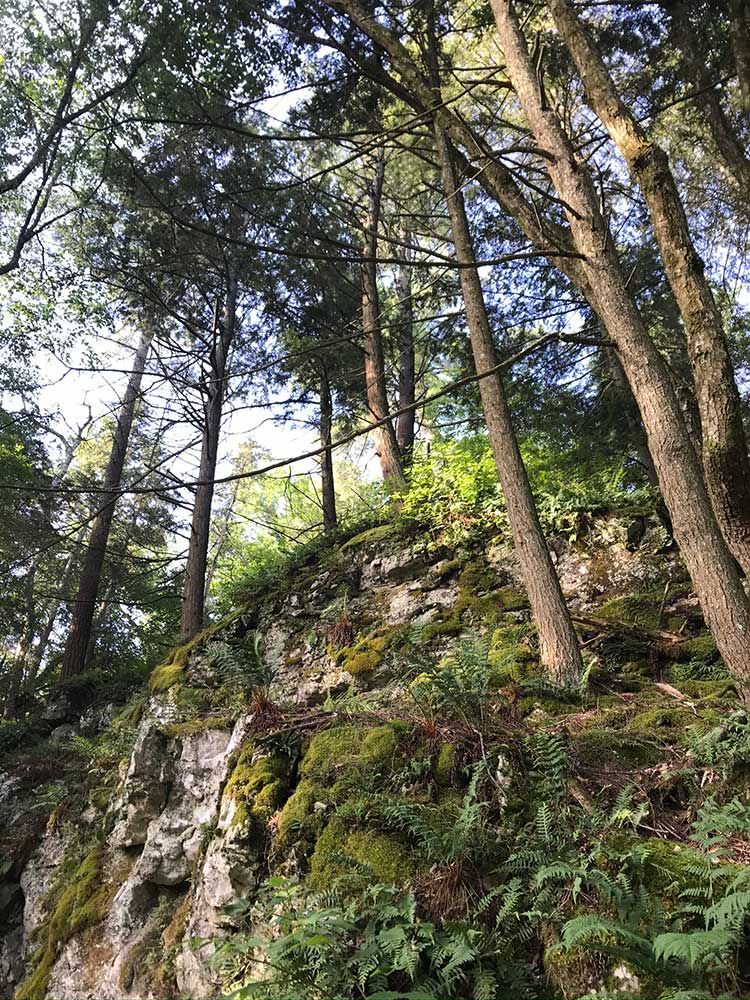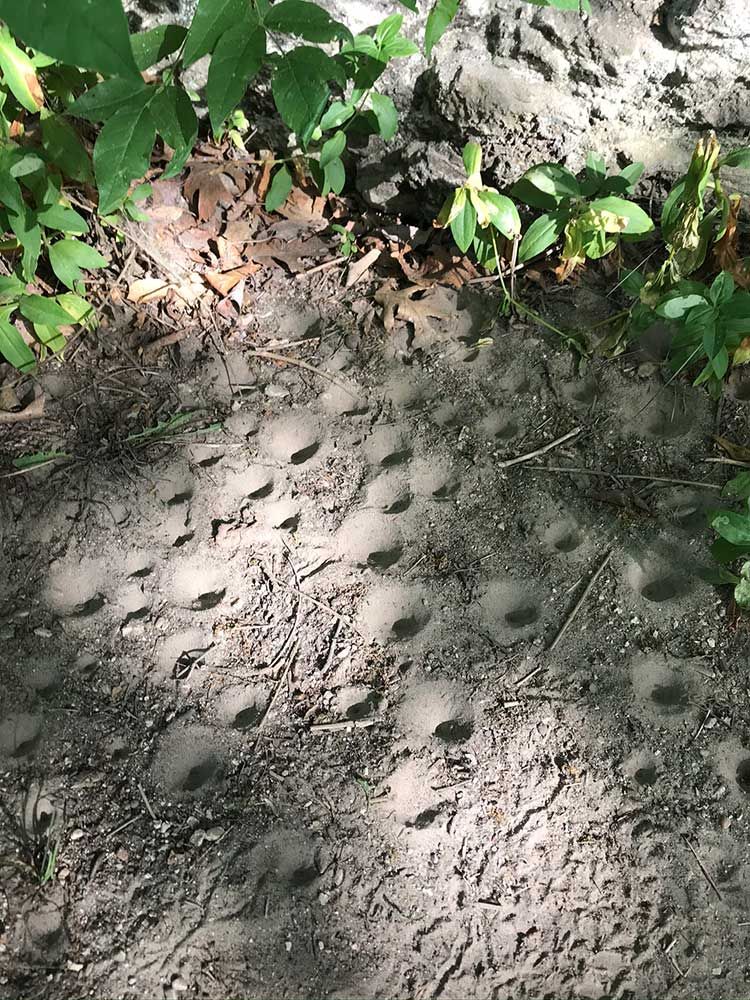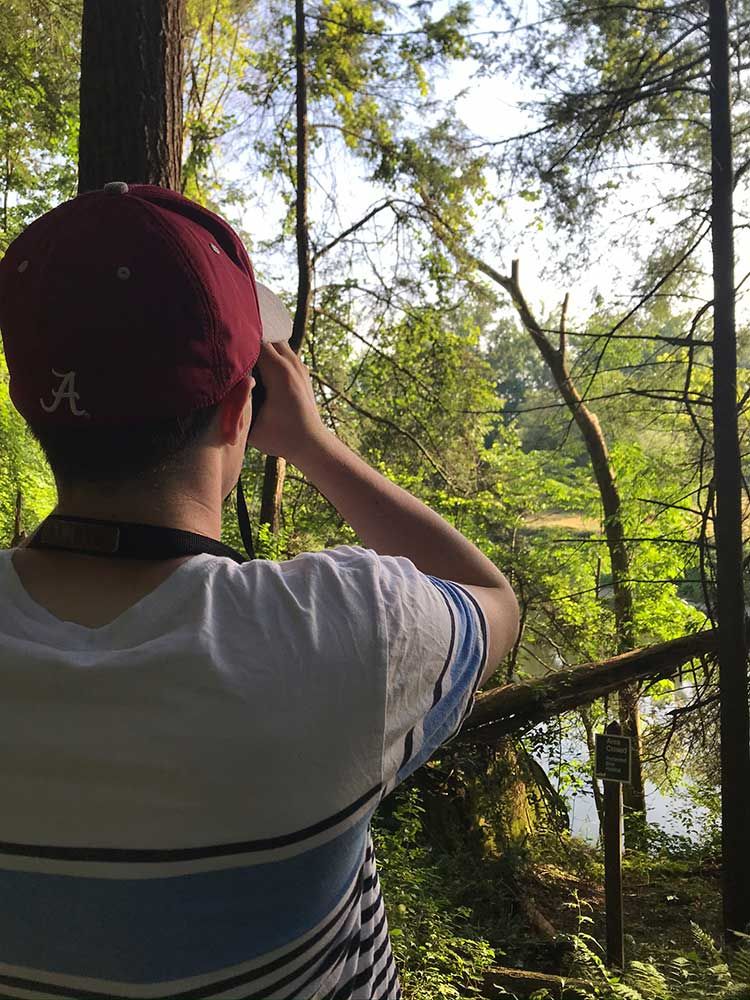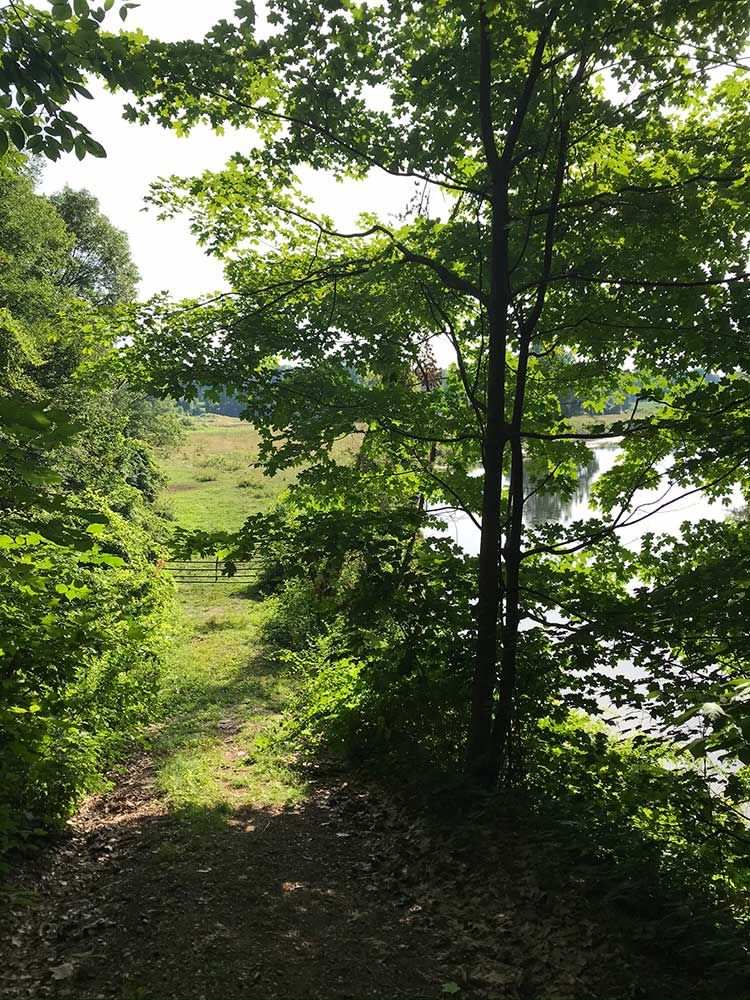Today’s birding blog brings me back to Massachusetts, more specifically the town of Sheffield. The location is Bartholomew’s Cobble, a property owned by the Trustees of the Reservation (the same organization that maintains Field Farm), a location that was chock full of birds and one of the most beautiful locations that I have visited for this bird blog series.
We stepped out of the car and I was able to pick up a few birds right off the bat such as American Crows and Chipping Sparrows. We decided to take the trail that would lead us by the Housatonic River in hopes that we would be able to spot more birds by the riverbank. We were not disappointed. I was able to see and hear a few birds while walking along the river such as American Goldfinches, Red-eyed Vireos, and Black-capped Chickadees. However, more was just around the corner.
Just as was the case on the Railroad Ramble the water was shockingly low which showed the muddy shores and steep muddy cliffs. It is disturbing and sad to see but it ended up exposing bird life to us. A few birds made themselves known on the river’s edge. There were several Killdeer, an oddly named, but common plover found all over the country. We also noticed a slightly smaller compatriot which we identified as a Spotted Sandpiper, a small sandpiper that is often found inland. In the distance was a majestic Great Blue Heron slowly making its way through the water.
Also in the river were a few non-bird species. We were able to lay or eyes on fish, turtles, and an unidentified large animal swimming in the water. My bet is on River Otter but my mom thought it was a beaver.
The real star of the river was a relatively common bird that was still amazing to see, nonetheless. Off past the heron there was a swarm of swallows dancing their way through the air. A quick look through my binoculars revealed the unnamed swallows were in fact Northern Rough-winged Swallows. There were about 40 in total all catching insects and returning to their mud holes dug in the riverbank—an amazing sight.
Further along we happened upon a hot spot where we were able to see Blue-gray Gnatcatchers, Baltimore Orioles, Tufted Titmice, and Yellow Warblers among others. Everywhere you looked there seemed to be a bird.
Before concluding our hike, we came upon something else I recognized. They were conical shaped holes that were dug into soft sand. I remembered them from the school trip I took as Ant Lions. They are insects that build cone shaped holes in the sand and wait for an ant to fall in. The walls are too steep, and the ant fails to get out leaving the Antlion with a tasty snack.
It was an incredible morning in a biodiverse sanctuary. We finished the walk with over 25 species sighted or heard and I can’t wait to go back and see what else lives there, bird or not. In the meantime… Happy Birding!





